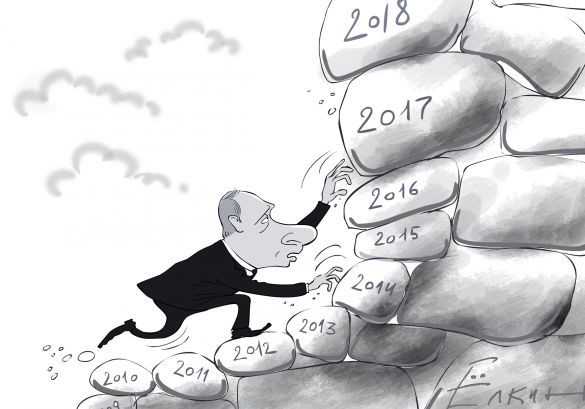Russia Will Still Play a Key Role in BP plc s Future
Post on: 16 Июнь, 2015 No Comment

Integrated oil and gas giant BP ( NYSE: BP ) recently held its 2014 Investor Update. Among the items up for discussion were BP’s over-arching goals through 2018, as well as a reiteration of its commitment to Russia in light of the current events unfolding in Ukraine. In addition, BP touched on its shareholder policies, including its dedication to providing increasing cash distributions over the next several years.
BP is a much different company than it was just a few years ago. However, it sees a great deal of potential over the next several years now that it’s more efficient. Here are the key takeaways from BP’s 2014 Investor Update.
‘Smaller, simpler, and more focused’
That’s how BP describes itself in its current form. On the upstream side of the business, BP has removed around half of its installations, 35% of its wells and half of its pipelines since April 2010. Importantly, this has not come at great cost to BP’s core base; it has only divested around 10% of its reserves.
In the downstream segment, BP has long maintained an intention to improve its competitive position. To do this, BP has reduced refining capacity by 38% going all the way back to 2000. At the same time, BP isn’t simply taking an ax to the entire segment. It has retained 91% of its volumes.
Put simply, BP has sharply reduced its footprint in both the upstream and downstream. But, the end result is that BP is much less bloated and is focused on the opportunities in which it is most competitive. Efficiency is the name of the game.
BP in Russia
In light of the renewed geopolitical risk brought on by ongoing tensions between Ukraine and Russia, BP felt compelled to touch on its business footprint in that region of the world. This has obviously turned into a risky proposition in recent weeks.
The Russian central bank recently raised interest rates, and fears of supply disruptions have weighed on Russian energy giants including Gazprom ( NASDAQOTH: OGZPY ). Gazprom supplies natural gas to western Europe through Ukraine, and as a result, saw its shares fall by double-digits on March 3.
For its part, BP is heavily entrenched in Russian energy. As a result of its transactions over the past few years, BP is now a 20% owner of Russian oil company Rosneft. BP’s investment in Rosneft represents a major portion of BP’s production and proved reserves, particularly now that BP is a much slimmer company than it has been historically. In fact, BP’s equity position in Rosneft accounts for approximately 28% of its 3.2 million barrels per day of production and 37% of its 18 billion barrels of oil reserves.
When compared to other European integrated super-majors, it’s clear just how massive BP’s investment in Russia really is. BP’s 2013 net production in Russia stood at 961,000 barrels of oil equivalents per day. To put that into perspective, Total ( NYSE: TOT ) produced just 192,000 barrels per day in Russia last year. Moreover, Total holds just 2.8 billion barrels of reserves in Russia along with only 1.3 billion barrels of offshore resource potential there. These figures clock in at 14.3 billion barrels of reserves and 48 billion barrel of offshore resource potential for BP’s Russian operations.

While there is notable headline risk right now, BP sees Russia as a major long-term opportunity. This stance should work in BP’s favor, as Russia is one of the world’s largest oil and gas producers. The potential of Russia’s resources is immense and should provide BP a long-term source of significant cash flow.
Cash flow growth to support rising distributions
In light of its capital discipline, it’s imperative for BP to execute on its existing investments in order to drive cash flow growth. Between 2011 and 2014, BP held the goal of increasing cash flow by 50%. It’s on track to reach that goal, and looking out to 2018, hopes to expand on that objective. Management believes the combination of capital discipline and organic growth realized by its Rosneft position and other investments, will allow for continued growth of distributions to shareholders.
BP is a much leaner company four years removed from the Gulf of Mexico oil spill and is embarking on a path of capital discipline, but it still has plenty of growth opportunity left. BP is committed to Russia through its investment in Rosneft, which should drive cash flow and distribution growth through 2018.
Will its cash flow lead to a dividend comparable to these companies?
Dividend stocks, as a group, have historically outperformed their non-dividend paying brethren. The reasons for this are too numerous to list here, but you can rest assured that it’s true. However, knowing this is only half the battle. The other half is identifying which dividend stocks in particular are the best. With this in mind, our top analysts put together a free list of nine high-yielding stocks that should be in every income investor’s portfolio. To learn the identity of these stocks instantly and for free, all you have to do is click here now .
Bob Ciura owns shares of BP p.l.c. (ADR). The Motley Fool recommends Total SA. (ADR). Try any of our Foolish newsletter services free for 30 days. We Fools may not all hold the same opinions, but we all believe that considering a diverse range of insights makes us better investors. The Motley Fool has a disclosure policy .














